#David DePatie
Text

Animators Friz Freleng and David DePatie, producer Harold Mirisch, and director Blake Edwards think Pink!
18 notes
·
View notes
Photo

The All New Pink Panther Show (1978)
#pink panther gif#the all new pink panther show#friz freleng#70s cartoons#saturday morning cartoons#david h. depatie#animation shorts#ABC#seventies#1978#gif#chronoscaph gif
701 notes
·
View notes
Quote
Friz didn't like Elmer Fudd. As a matter or fact, I don't think any of the directors liked him. The quota would come down, from the head of the cartoon studio, how many we're gonna do, and Elmer was always in one of them. And they always hated the idea doing Elmer, really, none of them. I'm talking about Chuck, Bob McKimson or Friz Freleng, they didn't want anything to do with Elmer Fudd. I think, in self-defense, that's where Friz got the idea for Yosemite Sam.
David H. DePatie on Elmer Fudd
#David H. DePatie#elmer fudd#quotes#Yosemite Sam#friz freleng#looney tunes#classic animation#classic cartoons#animation#history of animation#animation history#creating characters#character concept
42 notes
·
View notes
Text
Did anybody else here grow up with these sing along VHS tapes of DePatie-Freleng era Dr. Seuss adaptations?

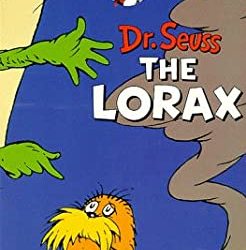

#dr seuss#theodor geisel#depatie-freleng#70s cartoons#tv specials#dr seuss on the loose#the lorax#the cat in the hat#vhs nostalgia#david h depatie#friz freleng#dean elliott#seuss on the loose was my favorite among this trilogy
14 notes
·
View notes
Text
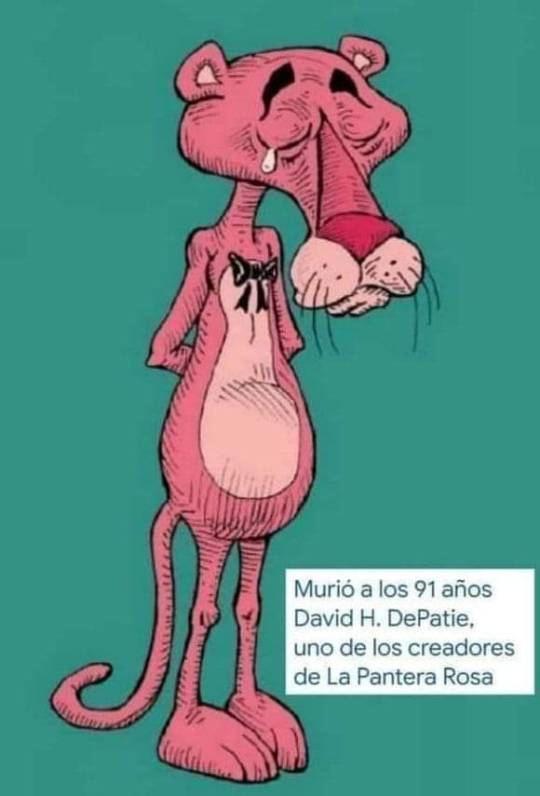
Ha muerto David H. DePatie... Fuiste parte de la felicidad de mi infancia con tú Pink Phanter. Gracias, totales.
1 note
·
View note
Text
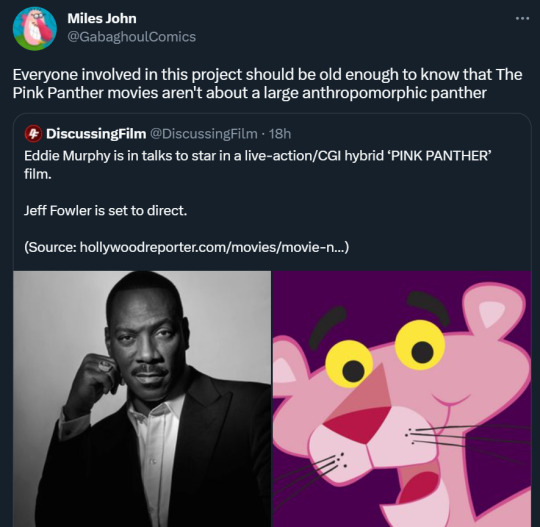
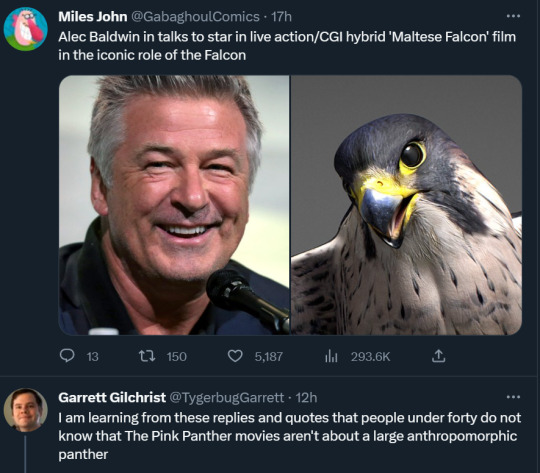
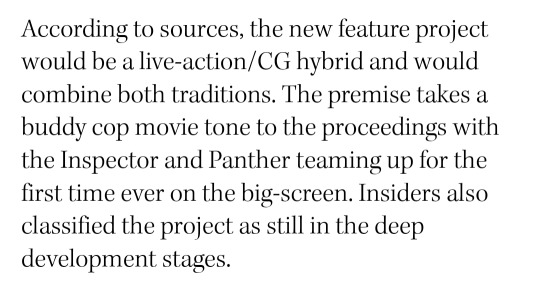
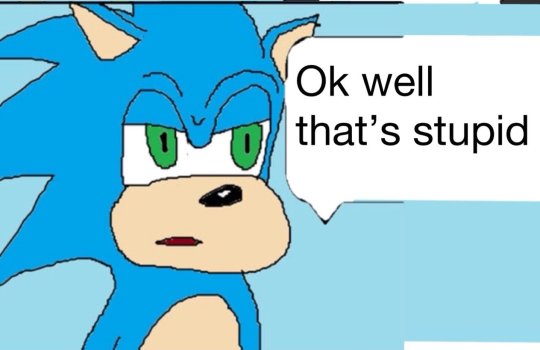
The 1963 film is a comedy about the theft of the Pink Panther diamond. It had an animated title sequence by Ken Harris for Friz Freleng. Both were Warner Bros/Looney Tunes animators. The Panther is more catlike here. Again he is a representation of a diamond used in the film's plot, which has a telltale flaw resembling a leaping panther.
Peter Sellers' character of the bumbling detective Inspector Clouseau proved popular, and returned in "A Shot In the Dark" (1964). Alan Arkin played a version of the character in 1968 which was less successful.
The animated Pink Panther character was refined further by Ken Harris and Richard Williams in "Return of the Pink Panther," in 1975, which established this as the title for the film series, and made the Panther "more elegant." Tony White animated the character for "The Pink Panther Strikes Again" (1976), for Richard Williams. Sellers returned again for Revenge of the Pink Panther (1978).
Friz Freleng (with David H. DePatie) did a series of animated shorts with the Pink Panther character in 1964 and 1965, after Warner Bros' animation studio had shut down in 1963. Warners tried to start the studio up again, but Freleng found the Pink Panther series more lucrative. These shorts were co-directed by Hawley Pratt who continued the series for MGM/UA. Other directors took over and the series continued until 1978, theatrically and on television.
Inspector Clouseau, and/or variations on him, are also in these cartoons as the "little man" who the Panther torments. There was also The Ant and the Aardvark (1969-1971).
The DePatie-Freleng studio was bought by Marvel comics around 1980. Marvel later produced series like Muppet Babies.
The name was occasionally brought back for TV series "Pink Panther and Sons" (1984-86), "The Pink Panther" (with Matt Frewer voicing the character, 1993-96), and "Pink Panther and Pals" (2010)
After Peter Sellers' death in 1980, there were many unsuccessful attempts to keep the Pink Panther live-action film series going, by Blake Edwards and producers. 1982's Trail of the Pink Panther briefly features a WWII-era Clouseau played by Danny Peacock, and unused footage of Sellers. Curse of the Pink Panther (1983) features Ted Wass. Son of the Pink Panther (1993) featured Roberto Benigni.
In 2006, Steve Martin starred as the bumbling Inspector Clouseau in a remake film of "The Pink Panther," with Kevin Kline and Beyonce Knowles. The film got a sequel in 2009. As is now customary, the films feature the Pink Panther diamond and have an animated title sequence with the animated Pink Panther character.
#the pink panther#this got a lot more reblogs before I added context#but I knew I had to add some context#if you don't add context you drive engagement because people want to say their piece about it
97 notes
·
View notes
Note
So, the Daffy/Speedy shorts. I’m not gonna bother asking why they exist, but why did they persist so long and were made so much during the 7 Arts era? Sure, I’d buy that plenty of people asked for more Daffy cartoons and more Speedy cartoons, but surely people started asking for at the very least more Bugs cartoons, right?
they were the two most popular characters at the time—Bugs was a mercy kill in that he was the first of the flagship characters (Bugs, Daffy, Porky) to get the axe in 1964, and i guess there was just a general understanding to not try to bring him back after the studio shut down, especially since he had his own thing going now with The Bugs Bunny Show; his last short was the final cartoon produced before WB shut its doors in 1962. evidently David DePatie of DePatie-Freleng fame said the Speedy/Daffys were a mandate and a concept he and Friz weren’t even really interested in, yet the TV networks/higher ups DID like them and wanted more. i imagine they were easy and quick and cheap to make since they’re all just standard chase cartoons and barely have any thinking outside of “Daffy antagonist Speedy protagonist hilarity ensues”
33 notes
·
View notes
Text
Cartoon Network Friday Spotlight- “The Pink Tail Fly”

Friz Freleng’s Pink Panther cartoons are an important part of animation history. Taking the titular Panther, who appeared in Blake Edwards’ 1963 film of the same name’s opening sequence and putting him into his own theatrical cartoon shorts which relied heavily on Henry Mancini’s legendary score for the film proved to be a last grasp at relevancy for animated shorts being released in theaters. This was when Warner was in the process of closing their animation division again, and the success of Freleng and David H. DePatie’s cartoons convinced the studio to try again, bringing them back to produce the last few years of Looney Tunes in between their Pink Panther shorts.
Granted, those Looney Tunes shorts are historically not very good, and while their other original characters wouldn’t be worth writing home about either, the Panther is still charming. He’s a likable character who offers a lot with no dialogue, and is backed by terrific music. Pink is cool, but liable to fall on his face. Smart, but with his blind sides. He’s a strong balance of personality.
In this one, the Panther’s evening is ruined when a mosquito comes in and bothers him. He tries everything to get rid of him, including pulling out his karate skills. Guess how that goes.
It’s cute stuff, even if it’s not entirely new in terms of concept. Pink Panther and other DePatie-Freleng shorts were a part of CN’s early years, but I don’t know how long they were a part of Turner’s library, if at all. It seems that MGM still owns the Panther, and more or less always has. Does that mean that Turner bought the broadcast rights to these cartoons, or did they briefly own them before being bought back? I’ve seen both ideas thrown out.
But hey, if you like this and want to see more Pink Panther cartoons, besides having recent home video releases, check out MeTV’s Toon in With Me, where they air alongside other classic cartoons from Warner/Turner’s library!
8 notes
·
View notes
Text
Illo tempore...
C’è stato un tempo in cui i programmi televisivi erano tutti in bianco e nero e la televisione a colori era di là da venire.
In quello stesso tempo, da queste parti si captava il segnale della Svizzera italiana.
Le mie trasmissioni svizzere preferite erano quattro.
Della prima ricordo ben poco.
Era una misticanza di cose ben diverse tra loro.
Strisce a fumetti.
Rompicapi e giochi vari.
La seconda era una serie di indicazioni rivolte ai conducenti d’auto.
Cosa fare, cosa non fare, come fare.
Io ero ben lontano dal procacciarmi la patente.
Però la guardavo volentieri.
E mi piaceva un sacco la voce del commentatore.
La terza erano delle lezioni di lingua spagnola.
Gli autori presentavano una serie di situazioni legate alla vita quotidiana.
Erano drammatizzate da due attori, un uomo e una donna.
Si erano rivelate molto efficaci.
Io avevo imparato un sacco di termini.
E riuscivo perfino a contare.
Ovviamente non ricordo più una minchia fritta.
La quarta trasmissione è quella che ricordo meglio.
S’intitolava Scacciapensieri.
Era un contenitore di cartoni animati.
C’erano: l’Ispettore Clouseau; la Pantera Rosa; un formichiere che dava la caccia a una formica; due rane verdi (una grassa e l’altra magra) che spadroneggiavano su uno stagno.
Tutte queste serie erano disegnate da Friz Freleng e David DePatie, già animatori della Warner.
C’era anche un cartone animato di Bruno Bozzetto: Stripy.
Era un buffo animaletto con i colori dell’arcobaleno.
Non parlava, ma rideva come un deficiente.
In ogni episodio doveva dissuadere un omone baffuto dal portare a termine una determinata operazione.
L’omone non gli dava mai retta e scopriva che dietro ciò che doveva fare si nascondeva una fregatura.
Alla fine, ridevano tutti.
9 notes
·
View notes
Text
youtube
Presented here are the first & second episodes of Roland and Rattfink, an American series of animated shorts produced and released from 1967 to 1972 and produced by David H. DePatie and Friz Freleng, the same folks who created The Pink Panther cartoons. The pair cameos in a few Pink Panther shorts

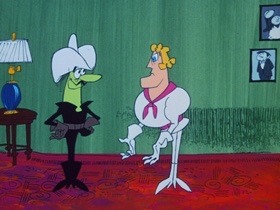
«The cartoons concerned blond, muscular, good-looking, pacifist "good guy" Roland and the many attempts by the evil, weedy, green-skinned (in most of the cartoons), mustachioed Rattfink to defeat or dispose of him.»
youtube
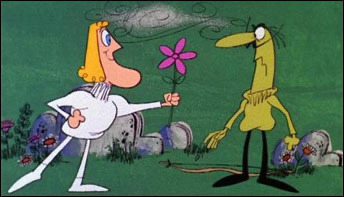
4 notes
·
View notes
Text

Isadore 'Frriz' Freleng (August 21, 1906 – May 26, 1995).
Credited as I. Freleng early in his career, he was an American animator, cartoonist, director, producer, and composer known for his work at Warner Bros. Cartoons on the Looney Tunes and Merrie Melodies series of cartoons. In total, he created more than 300 cartoons.
He introduced and/or developed several of the studio's biggest stars, including Bugs Bunny, Porky Pig, Tweety, Sylvester, Yosemite Sam (to whom he was said to bear more than a passing resemblance), and Speedy Gonzales. The senior director at Warners' Termite Terrace studio, Freleng directed more cartoons than any other director in the studio (a total of 266), and is also the most honored of the Warner directors, having won five Academy Awards and three Emmy Awards. After Warner closed down the animation studio in 1963, Freleng and business partner David H. DePatie founded DePatie–Freleng Enterprises, which produced cartoons (including The Pink Panther Show), feature film title sequences, and Saturday-morning cartoons through the early 1980s.
2 notes
·
View notes
Text
Both dumped by their girlfriends, two best friends seek refuge in the local mall. Eventually, they decide to try and win back their significant others and take care of their respective nemeses.
Credits: TheMovieDb.
Film Cast:
Rene: Shannen Doherty
T.S. Quint: Jeremy London
Brodie: Jason Lee
Brandi: Claire Forlani
Shannon: Ben Affleck
Gwen: Joey Lauren Adams
Tricia: Renée Humphrey
Silent Bob: Kevin Smith
Jay: Jason Mewes
Willam: Ethan Suplee
Stan Lee: Stan Lee
Ivannah: Priscilla Barnes
Svenning: Michael Rooker
La Fours: Sven-Ole Thorsen
Security Guard: Carol Banker
Arresting Cop #2: Steven Blackwell
Pull Toy Kid: Kyle Boe
TV Executive #1: David Brinkley
Fan Boy: Walt Flanagan
Guy Contestant #1: Ethan Flower
Girl with Easter Bunny: Chelsea Frye
TV Executive #2 – Bentley Garrison: Jeff Gadbois
Guy Contestant #2: Ed Hapstak
Cop #1: Terry Hempleman
Game Show Host: Art James
Steve Dave: Bryan Johnson
Child at Kiosk #2: Mikey Kovar
Fan at Comic Store: David Klein
Roddy: Scott Mosier
Saleslady at Lingerie Store: Crystal Muirhead-Manik
Kid at Poster Kiosk: Tyson Nassauer
Gill: Brian O’Halloran
Passerby in Parking Lot: Aaron Preusse
Child at Kiosk #1: Britt Swenson
Teacher: Mary Woolever
Team La Fours: Brad Fox
Team La Fours: Gino Gori
Team La Fours: Zach Perkins
Team La Fours: Brad Giddings
Team La Fours: Bryce Mack
Team La Fours: Christopher O’Larkin
Audience Member (uncredited): Earl R. Burt
Shopper (uncredited): Tammara Melloy
Screaming Girl in Audience (uncredited): Rachel Oliva
Shoobie Shake Girl (uncredited): Jessica Sibinski
Comic Book Fan (uncredited): Joel Thingvall
Film Crew:
Supervising Sound Editor: Richard LeGrand Jr.
Producer: Sean Daniel
Producer: James Jacks
Thanks: John Hughes
Supervising Music Editor: J.J. George
Casting: Don Phillips
Writer: Kevin Smith
Stunts: Phil Chong
Producer: Scott Mosier
Stunts: Sven-Ole Thorsen
Stunt Coordinator: Robert Apisa
Director of Photography: David Klein
Original Music Composer: Ira Newborn
Editor: Paul Dixon
Production Design: Dina Lipton
Executive Producer: Caldecot Chubb
ADR Mixer: Alan Holly
Set Decoration: Diana Stoughton
Line Producer: Laura Greenlee
Stunts: Chuck Zito
Production Supervisor: Beth DePatie
Post Production Supervisor: Terra Abroms
Foley Artist: Joan Rowe
Stunts: Carl Ciarfalio
Sound Effects Editor: Charles Maynes
ADR Editor: Bob McNabb
Makeup Artist: Toni G
Main Title Designer: Mike Allred
Executive In Charge Of Production: Donna Smith
First Assistant Director: Fernando Altschul
Stunts: Eric D. Howell
Casting Assistant: Ethan Flower
Script Supervisor: Carol Banker
Second Assistant Director: Louis Shaw Milito
Sound Re-Recording Mixer: Michael C. Casper
Set Costumer: Roseanne Fiedler
Costume Supervisor: Dana Kay Hart
Foley Artist: Diane Marshall
Sound Re-Recording Mixer: Daniel J. Leahy
Location Manager: Ralph B. Meyer
Sound Designer: Harry E. Snodgrass
Key Makeup Artist: Brigette A. Myre
Foley Mixer: James Bolt
Sound Editor: William Hooper
Sound Recordist: Charlie Ajar Jr.
Sound Editor: William Jacobs
Costume Design: Dana Allyson
Music Supervisor: Kathy Nelson
Color Timer: Dennis McNeill
Title Designer: Dan Perri
Orchestrator: Don Nemitz
Stunts: Jake Crawford
Prosthetic Makeup Artist: Crist Ballas
Supervising ADR Editor: Norval D. Crutcher III
Assistant Sound Editor: Samuel Webb
Negative Cutter: Gary Burritt
Assistant Sound Editor: Michelle Pleis
Boom Operator: Anton Herbert
Production Coordinator: Lisa Bradley
Music Supervisor: Jeff Saltzman
First Assistant Editor: Richard J. Rossi
Location Manager: Bob Medcraft
Art Direction: Sue Savage
Cableman: Matthew Magrattan
Second Second Assistant Director: Shari Nicotero
Assistant Editor: Paul Kieran
Hairstylist: Sherry Heart
Sound Mixer: Jose Araujo
Casting Associate: Dee Dee Wehle
Assistant Editor: Elisa Cohen
Hair Assistant: Kristin Mosier
Movie Reviews:
JPV852: Only the second time seeing this (last was probably in the early 2000s on DVD) and thought it was okay but guess like others, this has grown on me. Laughed throughout even when the dialogue wasn’t the greatest, but I have an appreciation...

View On WordPress
#aftercreditsstinger#bandleader#coke#ex-boyfriend ex-girlfriend relationship#game show#mall#shopping#silent man#slacker#Top Rated Movies
0 notes
Text
The Pink Panther Show (Hanna-Barbera/David H. DePatie, Friz Freleng; 1969-1979)
The 1970s were quite a pivotal time for the industry. With Disney in one of its biggest historical slumps and television becoming more standard, it was time for bigger studios to rise to the occasion and populate the at-home viewing landscape with as many cartoons as they could muster. This led to a barage of properties that all launched very quickly, as it was kind of a space race to see who could become "the Disney of TV".
After leaving the dying MGM animation division and being burnt out from Warner Brothers, William Hana and Joseph Barbera would once again find themselves as the main providers of animated entertainment as their production house only got more popular over the years. With dozens of projects running, it seemed they were leading the charge for claiming the aforementioned title to themselves. Additionally, the public had not too long ago had their minds blown by the heart found in UPA's productions, even when these were mostly created with two hotdogs and a prayer for a budget. These factors all created a bit of a perfect storm for Hanna-Barbera productions, making quick, cheap-but-memorable entertainment and holding their place as a household name. This leads us to one of their most popular creations, and the subject of today's analysis:



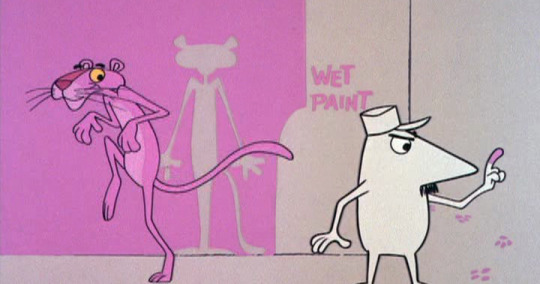
Hijinks. That's all that goes on here.
This show was kind of a one-of-one. Silent-movie style gags, absolutely no spoken dialogue, under 10 minute episodes, it's a no-holds-barred comedy that moves QUICK, and does not really linger much on anything at all, letting you take in all you need to and moving on quickly. Most shots here have quite the minimalist design, many not even having any proper background other than a solid color and some guiding lines, focusing us fully on the characters on screen.
This isn't to say the show had no heart or sincerity, quite the contrary. Many critics and audience members at the time were fond of the shorts in fact because they had a sort of blues-y charming earnestness to them, what with the city setpieces, the satirical view it showed on modernity, and the unmistakable quad-platinum banger that is its main theme, created by legendary composer Henry Mancini.
Running for over a decade, calling the show just successful is nothing short of an understatement. It redefined the look cartoons could have in modernity, and helped establish a place for minimalism in popular entertainment. Its influence in modern animation is just about ubiquitous, and I don't think it's debatable for me to say the Pink Panther is one of the most important television programs of the 20th century.
References:
Hanna-Barbera, Wikipedia:
The Pink Panther Show - Cartoon Network Wiki
The Pink Panther Cartoon Collection - The Internet Archive
The Pink Panther Show - Wikipedia
0 notes
Quote
If you look at any of the shorts, you'll see there's a Chuck Jones Bugs, there's a Bob McKimson Bugs, and there's a Friz Freleng Bugs. Of course, Friz always felt that his Bugs Bunny was the funniest and I think it probably was. But yeah, there was definitely a lot of competition among the three guys, particularly with Bugs.
David H. DePatie
#David H. DePatie#quotes#looney tunes#bugs bunny#friz freleng#chuck jones#robert mckimson#warner bros#animation#cartoons
13 notes
·
View notes
Text
0 notes
Text
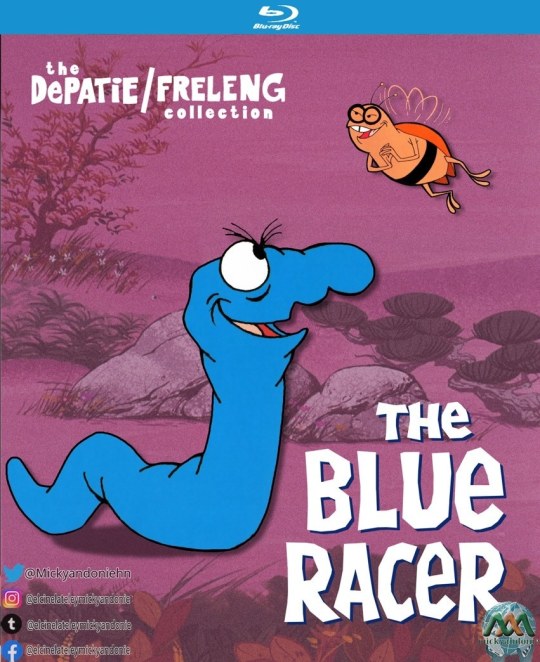
"THE BLUE RACER"
Es una serie de 17 dibujos animados teatrales producidos entre 1972 y 1974 creados por Friz Freleng y David H. DePatie. La primera caricatura del personaje, Snake in the Gracias, se estrenó en cines el 24 de enero de 1971.
Créditos: Tomado de Wikipedia
https://en.wikipedia.org/wiki/The_Blue_Racer
1 note
·
View note